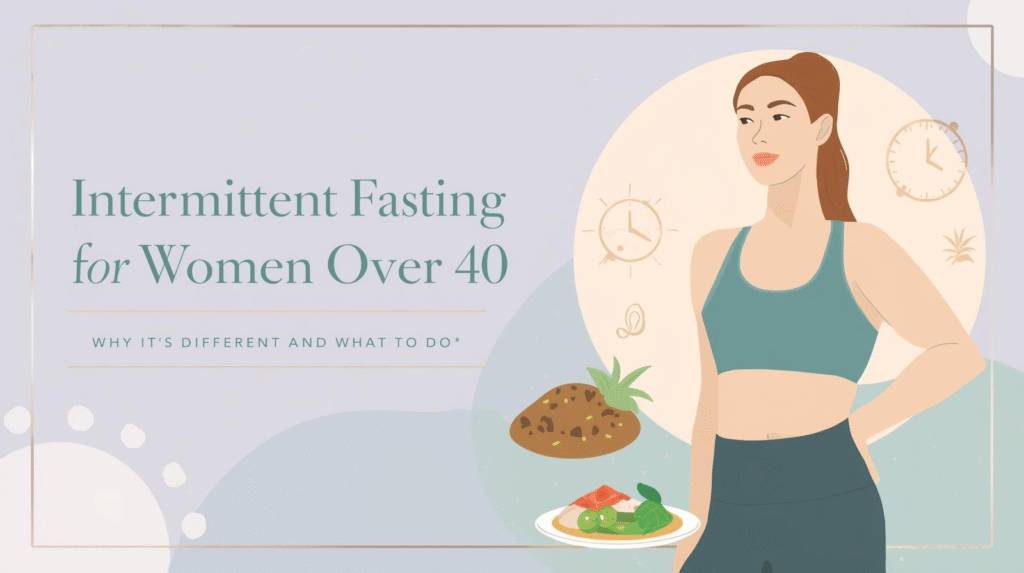Ladies, if a standard intermittent fasting plan is leaving you feeling drained, irritable, and not seeing results, it’s not you. Your hormones play by different rules. Here’s the safe, effective, and hormone-friendly way to use IF to boost your metabolism after 40.

Intermittent fasting is a powerful tool, but it’s not a one-size-fits-all approach. This is especially true for women, particularly those over 40 who are navigating the complexities of perimenopause and menopause.
While IF can be fantastic for weight management, mental clarity, and insulin sensitivity for women, an aggressive approach can sometimes backfire, increasing stress on the body. The key is to work with your female biology, not against it.
Why Hormones Matter: Cortisol & Insulin
Women’s bodies are highly sensitive to signals of stress. A prolonged fast can be perceived as a stressor, potentially elevating the stress hormone cortisol.
- Why it’s a problem: Chronically high cortisol can lead to stubborn belly fat storage, sleep problems, and thyroid issues—the exact opposite of what we want!
- The other key player: Insulin. As estrogen declines, many women become more insulin resistant, meaning our bodies hold onto fat more easily, especially around the midsection.
The goal of IF for women over 40 is to lower insulin without spiking cortisol.
The “Female-Friendly” Fasting Guidelines:
- Start Shorter, Go Gentler: Forget the 20:4 or OMAD (One Meal A Day) plans for now. They are often too stressful for the female hormone system.
- The Sweet Spot: Begin with a 14:10 schedule (fast for 14 hours, eat within 10). This is challenging enough to see benefits but gentle enough to be sustainable. A 16:8 schedule can also work well for many, but listen to your body.
- Try Crescendo Fasting: This is a brilliant method for women.
- How it works: You only fast on non-consecutive days. For example, fast for 14-16 hours on Monday, Wednesday, and Friday. On the other days, eat normally. This prevents your body from perceiving it as a constant stressor.
- Never Fast When Stressed or Sleep-Deprived: If you had a terrible night’s sleep or are going through an emotionally taxing time, skip the fast. Eat a nourishing breakfast. Piling a fast on top of existing stress is a recipe for high cortisol.
- Break Your Fast Mindfully: This is non-negotiable. Always break your fast with a balanced meal of protein, fat, and fiber (see Article 4). This is crucial for balancing blood sugar and supporting hormones.
- Listen to Your Body (Your Most Important Guide): This is the ultimate rule. Signs you might need to adjust your approach:
- It’s working: You have steady energy, improved sleep, and are losing weight slowly.
- It’s NOT working: You feel exhausted, irritable, anxious, can’t sleep, your workouts suffer, or your period becomes irregular. If this happens, shorten your fast, eat more on your eating days, or take a break.
Intermittent fasting can be a revolutionary tool for women over 40 to take control of their metabolic health. The path is just slightly different—more intuitive, more gentle, and incredibly effective when done right.
Looking for a Hormone-Smart Plan?
Navigating hormones and fasting can feel complex. A resource designed specifically for women can provide incredible clarity and confidence. I highly recommend the program Intermittent Fasting for Women: A Hormonal Guide. It covers everything from cycle syncing to cortisol management and includes meal plans that support hormonal balance.